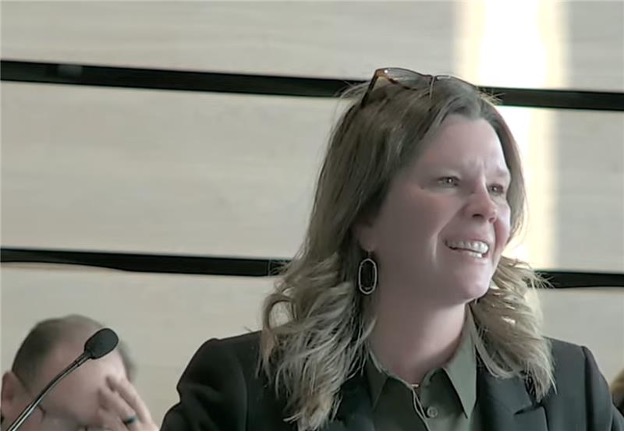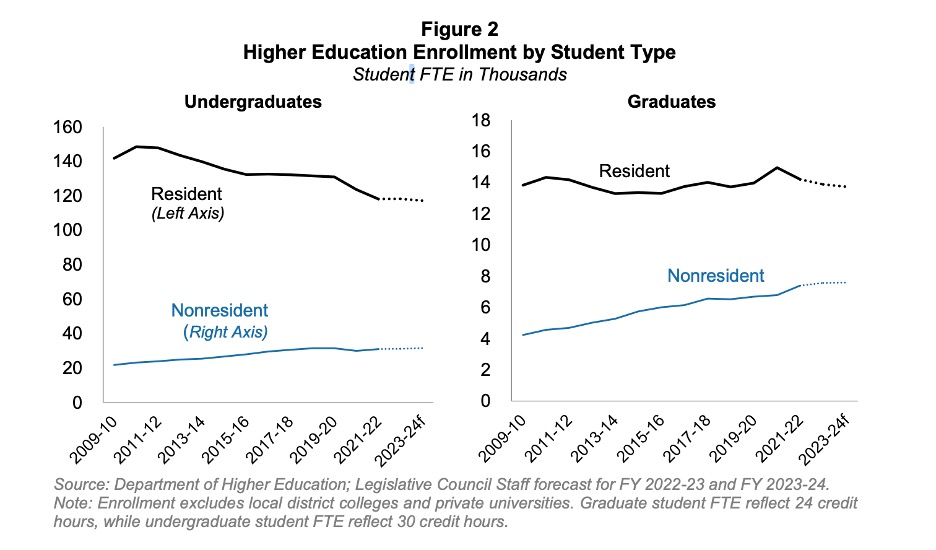CSU Pueblo Approves Reduced Tuition Rate for 10 Neighboring States
Release Date: December 12, 2024

CSU Pueblo Approves Reduced Tuition Rate for 10 Neighboring States
Figure 1 Dr. Kristyn White Davis addresses the CSU System Board of Governors December meeting
In an effort to expand access and boost enrollment, Colorado State University Pueblo (CSU Pueblo) will offer a tuition rate equal to the university’s in-state rate to new students in bordering states and California, Nevada, and Texas as well as five countries, marking one of the institution's most ambitious recruitment initiatives to date.
Reduced Tuition Rate
The Regional In-State Equivalent (RISE) rate was endorsed by the Colorado State University System Board of Governors during its December meeting, allowing CSU Pueblo to offer the reduced beginning in Fall 2025.
Under the approved plan, new Fall 2025 students from Arizona, California, Kansas, Nebraska, Nevada, New Mexico, Oklahoma, Texas, Utah, and Wyoming will edit hour – the same rate as in-state residents. However, these students will not receive the College Opportunity Fund stipend, which remains exclusive to Colorado residents. Existing students will remain at their current discounted WUE or TWOLF rates. The RISE initiative also extends the rate to international students from five countries where Pueblo maintains sister city partnerships.
Addressing the board, Dr. Kristyn White Davis, CSU Pueblo’s Vice President for Enrollment Management and Extended Studies said the university already has a similar system in place with an equivalent in-state rate offered to a limited number of students from New Mexico. She expressed excitement about reaching into markets with students who will benefit from CSU Pueblo’s Hispanic Serving and Minority Serving Federal Designations. These designations provide funding for support that benefits all students.
"The idea is to attract new students to CSU Pueblo," said White Davis. "We feel pretty strongly that these are key markets where we could make a difference.”
Strategic Enrollment Initiative
CSU Pueblo's tuition initiative follows a broader trend of regional public universities seeking creative solutions to enrollment challenges.

The move comes as Colorado's higher education landscape grapples with shifting enrollment patterns. In-state enrollment has faced headwinds since the global pandemic, particularly within the University of Colorado and Colorado State University systems. However, out-of-state student interest has shown promising growth, according to a 2023 state legislature enrollment forecast. The university projects a 1% increase in undergraduate enrollment for the upcoming academic year, building on current growth trends.
“The initiative serves a dual purpose,” added White Davis. “Beyond enrollment growth, we're looking to enhance campus vitality. We do have a bit of a commuter school because 55% of our current students come from Pueblo. Increasing our out-of-state population would naturally boost on-campus residency. Having more students living on campus creates a more vibrant community atmosphere that benefits all students, including our local commuters."
Strengthening International Partnerships
 Figure 2 CSU Pueblo President Armando Valdez listens to Dr. White Davis address the Board of Governors
Figure 2 CSU Pueblo President Armando Valdez listens to Dr. White Davis address the Board of Governors
The university is also extending the tuition benefit to students from China, Italy, Mexico, Slovenia, and South Korea, leveraging existing sister city relationships to strengthen international enrollment.
Figure 2 CSU Pueblo President Armando Valdez listens to Dr. White Davis address the Board of Governors.
“Part of this effort reflects our entrepreneurial approach to enrollment growth," said CSU Pueblo President Armando Valdez. "During a recent Sister Cities visit to Chihuahua, Mexico in September, we identified out-of-state tuition as a significant barrier for international students.
While our average tuition [revenue] will decrease if we get more students, our net tuition gain will increase based upon volume. This is shaping our broader strategy of extending in-state rates to both regional and international markets where we see untapped potential.”
As CSU Pueblo looks at geographic expansion and tuition restructuring to increase enrollment it may also present a different model for regional public universities seeking to remain competitive. As institutions nationwide deal with demographic shifts and changing enrollment patterns, the university could serve as a template for others while maintaining their public mission of accessibility and affordability.


